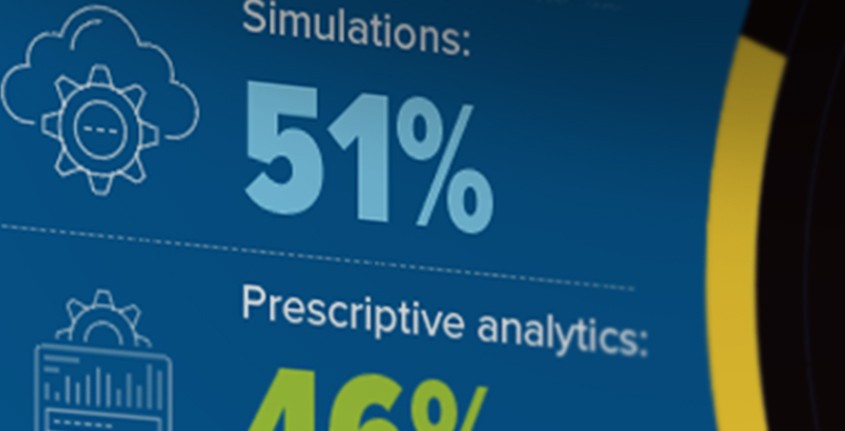A Balance of Power
An aging energy infrastructure, the needs of a growing population, government mandates and the whims of public opinion…
Chris O’Riley has a lot on his mind.
As deputy CEO of BC Hydro, which supplies 95 percent of British Columbia’s power, Mr. O’Riley notes dryly that he is “the person responsible for keeping the lights on” in the province. And he is not that far off: Mr. O’Riley is responsible for BC Hydro’s annual CAD$2.3 billion portfolio of projects, determining how the company will invest to update current infrastructure and develop new sources of energy.
His choices must meet the region’s growing demand for power—by 2035 BC Hydro estimates its customer base will have increased by over 1 million people—and align with the government’s goal of delivering 100 percent of its new energy from renewable sources.
Navigating the internal decision-making process to meet these strategic challenges is complicated by BC Hydro’s operating context. It is a government-owned company, which means Mr. O’Riley is answerable to a crucial stakeholder: the public. He must adhere to a capital budget based on a long-term plan that caps annual rate increases at 3 to 4 percent to give customers confidence in their future energy costs. And he must be open to pushback from citizens concerned about how development will affect their life, their land and the broader environment.
Mr. O’Riley does not see any of this as a straitjacket, however.
“Both public- and private-sector companies today need to consider a broad array of outcomes beyond just the bottom line, including environmental and social impacts,” he says. “As a government-owned entity, we can take a longer-term view of both the benefits and costs of our infrastructure investments. We’re not driven by short-term earnings.”
Since being appointed deputy CEO in 2015, Mr. O’Riley has come to terms with the fact that he cannot please every stakeholder with every decision. Garnering needed support is a delicate balancing act. To get it right, he relies less on his gut and more on a formal process. “Leaders must have a structured decision-making process to avoid making arbitrary choices based on one person’s opinions,” he says.
“Effective listening and gathering of information before making a decision is absolutely critical to ensuring we’re basing the decision on the complete set of facts.”
Beyond Bias
The bulk of projects Mr. O’Riley currently oversees aims to address British Columbia’s aging infrastructure. In fact, the whole country is facing up to this challenge: Canada is home to many 100-year-old hydroelectric installations in need of maintenance to reduce the risk of outages and increase efficiency on the grid, according to The Conference Board of Canada. The group estimates that through 2030, $350 billion will have been invested in the country’s entire system to get it up to par.
BC Hydro began ramping up its infrastructure update efforts several years ago. But choosing which of 31 hydroelectric facilities, three natural gas-powered thermal power plants and more than 77,000 kilometers of transmission and distribution lines deserves the next investment is a complicated process. Mr. O’Riley’s team begins by reviewing the benefit/risk scenarios for each proposed project and for the portfolio as a whole before settling on a course of action. Proposals are also reviewed by subject-matter experts to determine quality and urgency.
“Effective listening and gathering of information before making a decision is absolutely critical to ensuring we’re basing the decision on the complete set of facts,” Mr. O’Riley says. “I rely on my management team and key functional leaders to ensure we understand the risks and avoid groupthink in decision-making.”
When proposed projects do not go through this entire process, it calls into question the legitimacy of the decision that is ultimately made, at least in the eyes of Mr. O’Riley. “You prejudice an outcome by making a decision based on only some information or a single perspective on the right course of action,” he says. “By going through the whole process, you ensure that you are considering the decision from all angles, to make the most informed choice,” he says.
Against the Grain
Sometimes the decision-making process leads him to conclusions that make his own team unhappy. Take the nearly CAD1.1 billion project to replace the 125-megawatt John Hart Generating Station, a hydroelectric power station in Campbell River, British Columbia. The 70-year-old station was in poor condition and electricity output was declining. Assessments found that the facility was unlikely to withstand even a moderate earthquake.
 The site was prioritized for upgrades and work began in 2014. However, instead of utilizing the traditional model to replace the station, in which the internal team designs the new facility and then bids out the build, Mr. O’Riley pushed BC Hydro to go with a design-build public-private partnership (PPP) model for the project. One reason for this move was the constraints on the site based on its location in a high-use public park. He also felt his team’s designs did not adequately address the need to protect a salmon habitat downstream from the station in the event of a shutdown.
The site was prioritized for upgrades and work began in 2014. However, instead of utilizing the traditional model to replace the station, in which the internal team designs the new facility and then bids out the build, Mr. O’Riley pushed BC Hydro to go with a design-build public-private partnership (PPP) model for the project. One reason for this move was the constraints on the site based on its location in a high-use public park. He also felt his team’s designs did not adequately address the need to protect a salmon habitat downstream from the station in the event of a shutdown.
“We were looking for a more innovative approach, which we ultimately found through the PPP,” he says. The external designers came up with a design that would be less disruptive to the environment of the park, while still meeting safety and sustainability goals. According to Mr. O’Riley, the PPP was a cost-effective way to transfer project design and construction risk to an external organization.
But the decision caused consternation for many internal team members, especially with in-house engineers eager to design the new facility. “As a leader you have to be willing to make big declarations Share on X and then follow through with action.”
To address the internal conflict, Mr. O’Riley created a dedicated team to write the specifications for the project and ensure the necessary outcomes would be achieved while communicating the benefits of the procurement model to the rest of the company. “We needed people to be aligned. So I spent a lot of time explaining the rationale for this decision to give people the confidence that it was the right move,” he says.
He also brought in outside consultants to review the lead contractor’s specs and drawings throughout the project to give everyone ongoing confidence that things were going in the right direction. “You have to focus on the people side of these decisions,” he says. “If you can get everyone going in the same direction, you can overcome a lot of barriers to change.”
The project, which is expected to finish in 2019, has been a success thus far in the company, opening people’s eyes to the need to bring an external perspective to decision-making when choosing and planning projects.
“It’s an important lesson about bias and the need to look beyond our own internal strengths and weaknesses,” Mr. O’Riley says.
Error Recovery
Even with the most in-depth vetting process, some decisions are still a risk, and they do not always pay off. Mr. O’Riley points to one decision he recently supported to defer capital upgrades on BC Hydro’s Bridge River hydroelectric complex. The facility ended up deteriorating faster than expected, forcing BC Hydro to operate it at less than capacity in order to prolong its life. This created water-flow management challenges in the local reservoir that will take years to rectify.
“We made the decision based on the information we had at the time,” Mr. O’Riley says. “It was a bad outcome that reminded us that if you operate with little margin, you have fewer options to manage your risks.”
Infrastructure decisions are made in the context of considerable uncertainty, he emphasizes. “It is therefore critical to understand the assumptions underlying a decision and how those could be affected by changing conditions. And to recognize that sometimes conditions change and the assumptions don’t hold. Again, it’s about openness and transparency—companies and executives need to be open about what has changed and the implications for the decision. That may mean reworking the plan.”
Ultimately, there is no way to guarantee perfection in every decision. “As a leader, the key is making the most informed decision possible,” Mr. O’Riley says. “Then do whatever you can to build support and drive the right outcomes for those decisions you have made.”




